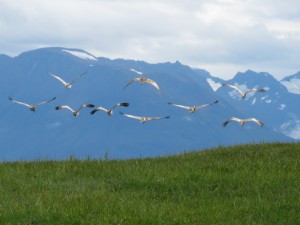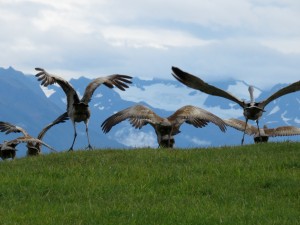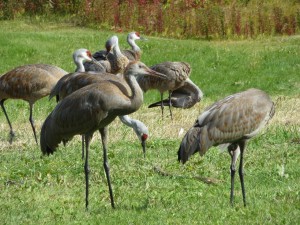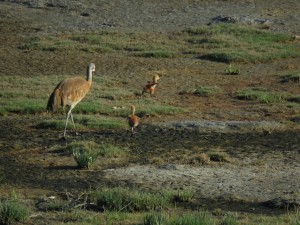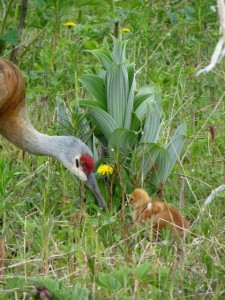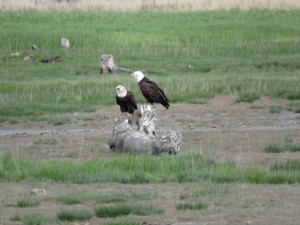By Nina Faust
This past February was Alaska’s warmest on record, with the past three months being 10.6 degrees above the long-term three-month average set 92 years ago. Flower bulbs are pushing up, pussy willows have been out since January, local fruit trees are blooming and sandhill cranes are here in Homer; nearly a month earlier than their usual arrival time of mid-April.
On March 9, Mary Sanders reported three cranes flying fairly low near Beluga Slough, just before 8 a.m. Two people reported on Facebook hearing cranes the day before. On March 10, Kachemak Crane Watch received a second call about a pair seen about five miles out East End Road. A report on March 13 confirmed that cranes are on the ground in Homer.
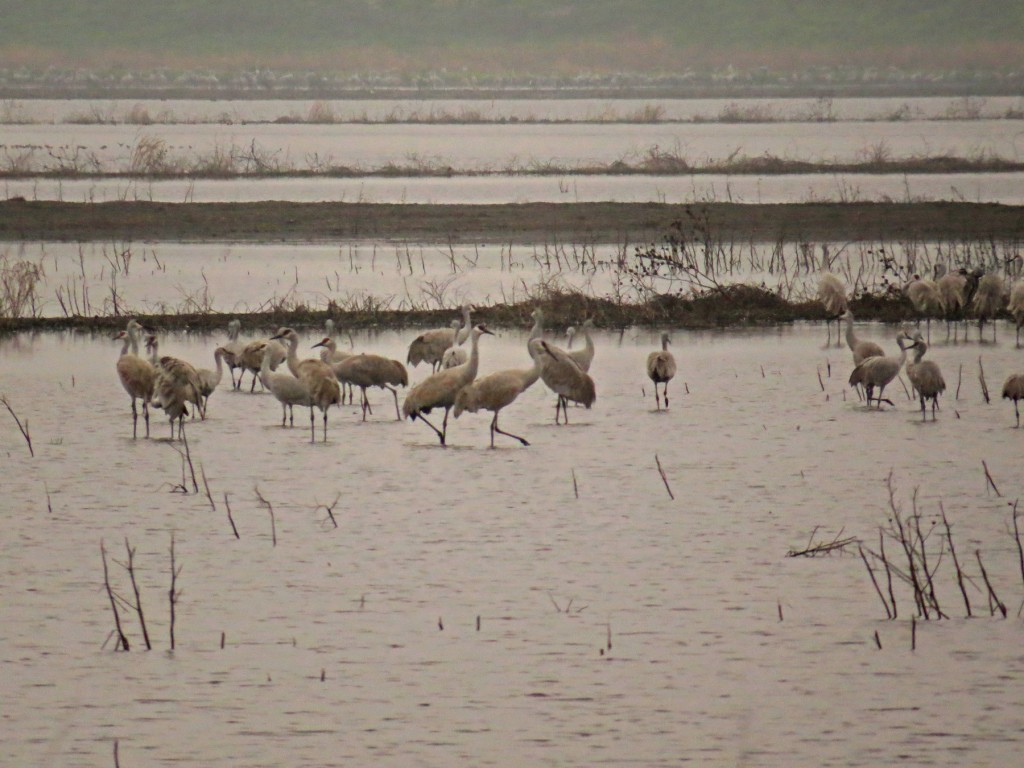
Sandhill Cranes settle in the wetlands near Sacramento for the night. Shallow marshes or flooded agricultural fields are important roosting areas in the Central Valley of California. Photo Credit: Jeanne Cunningham, Friends of Stone Lakes National Wildlife Refuge
Homer’s sandhill cranes winter in California’s Central Valley near Sacramento, where a severe drought has made life difficult for cranes.
“We typically see a decline in crane numbers around the middle of February, as do most other wetland and conservation area managers in the Central Valley and Delta,” said Stone Lakes National Wildlife Refuge Manager Bart McDermott. “It was unusually dry and warm here in February, and may have influenced some birds to start their migration a little early.
Some of Homer’s satellite-tagged birds have been sighted at Stone Lakes in the past.
The warm-water blob in the Pacific, as well as El Niño, have brought warmer-than-normal temperatures to all of Alaska — along with more rain than snow in Southcentral and Southeast Alaska.
Dr. Gary Ivey, western representative with the International Crane Foundation, told Kachemak Crane Watch, “I can only speculate that such an early arrival of sandhill cranes to the Homer area might be due to the record mild winter and the sparsity of snow at staging areas along the coast of Alaska; such as the Copper River and Stikine River deltas. Snow in these major crane migration stopovers likely would normally delay their movement north.”
So how will the early arrivals fare? That depends on the weather over the next several months. The snow-free, lower benchlands around Homer have plenty of areas for cranes to forage and roost, but not so up on the ridge, where two or more feet of snow still lingers. March and April have been known to throw some wild weather at us before spring truly begins.
Kachemak Crane Watch is interested in reports of what these early arrivals do in the next month. Where will they spend most of their time? What behaviors will they be performing: mating, painting, foraging, dancing? Normally, cranes begin nesting in early May. Will they start nesting in April instead? If successful, fledged colts will have a longer time to prepare for migration. If unsuccessful, a pair may have time to re-nest in May.

A mated pair unison calling in spring. Male on the right, female on the left. Photo Credit: Nina Faust, Kachemak Crane Watch
Citizen science is a big part of Kachemak Crane Watch’s ability to keep track of Homer’s sandhill cranes. Participation by interested crane-watchers helps us learn more about our local cranes so we can continue our ongoing education and conservation efforts.
Watch for early arrivals and take notes on what they are doing, where they are observed and —most importantly — if you see mating or nesting behavior. Report your information to Kachemak Crane Watch at reports@cranewatch.org or call 235-6262. Visit our website at www.cranewatch.org.
Kachemak Crane Watch is a project of the Center for Alaskan Coastal Studies.
Nina Faust is a member of the Kachemak Crane Watch, reports@cranewatch.org, 907-235-6262 www.cranewatch.org



